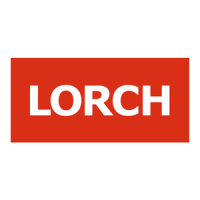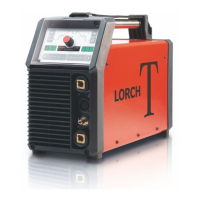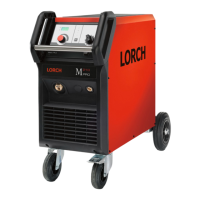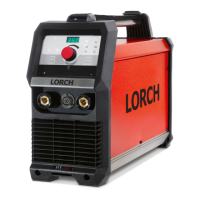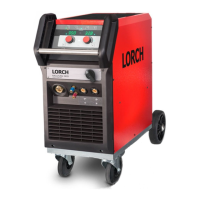Puesta en marcha
- 65 -
01.21 909.2669.9-02
Ajuste del ID del soplete
En cada soplete de la serie i-LTG/i-LTW se encuentra almace-
nado un número de identicación de soplete. A este ID de
soplete se encuentra asociada la capacidad de carga máxima
del soplete. Con la protección de soplete activada (parámetros
secundarios “tPr” = On), en el modo de operación WIG, solo
puede ajustarse en el aparato de soldar una corriente de sol-
dadura con la máxima capacidad de carga del soplete.
El ajuste del ID del soplete es necesario p. ej. al cambiar la
placa del soplete.
 Seleccione el menú nº C00 en el menú especíco del usua-
rio.
 Ajuste en el regulador giratorio 41 el ID del soplete necesa-
rio, basándose en la tabla de ID de soplete.
Tipo de soplete
ID de so-
plete
Capacidad de carga
CC CA
i-LTG 900 9 125 A 80 A
i-LTG 1700 17 150 A 120 A
i-LTG 2600 26 200 A 160 A
i-LTG 2800 28 300 A 250 A
i-LTW 3000 30 320 A 220 A
i-LTW 1800 18 350 A 250 A
i-LTW 1800sc 19 400 A 320 A
i-LTW 2000 20 220 A 165 A
i-LTW 4500 45 450 A 360 A
Tab. 6: ID de soplete
 Para guardar, pulse la tecla que se encuentra a la derecha
bajo el parámetro principal 48.
9 El ID de soplete ajustado se transere al soplete.
14.6 Funciones especiales
Test de gas, test de panel de mando
 Pulse simultáneamente la tecla superior derecha Modo de
operación 47 y la tecla inferior derecha Parámetro princi-
pal 48; el test de gas se iniciará en aprox. 30 segundos. Al
mismo tiempo se iluminarán brevemente todos los LEDs y
la indicación de 7 segmentos.
 Pulsando de nuevo ambas teclas el test de gas nalizará.
Reset principal
Todos los parámetros de soldadura y secunda-
rios retomarán el ajuste de fábrica (Función de
reset principal)
 Pulse la tecla Soldadura 30 arriba a la izquierda y mantén-
gala pulsada.
 Al mismo tiempo, pulse brevemente la tecla
 Parámetro principal 48 abajo a la derecha.
9 LED y las indicaciones de 7 segmentos se iluminan breve-
mente.
i
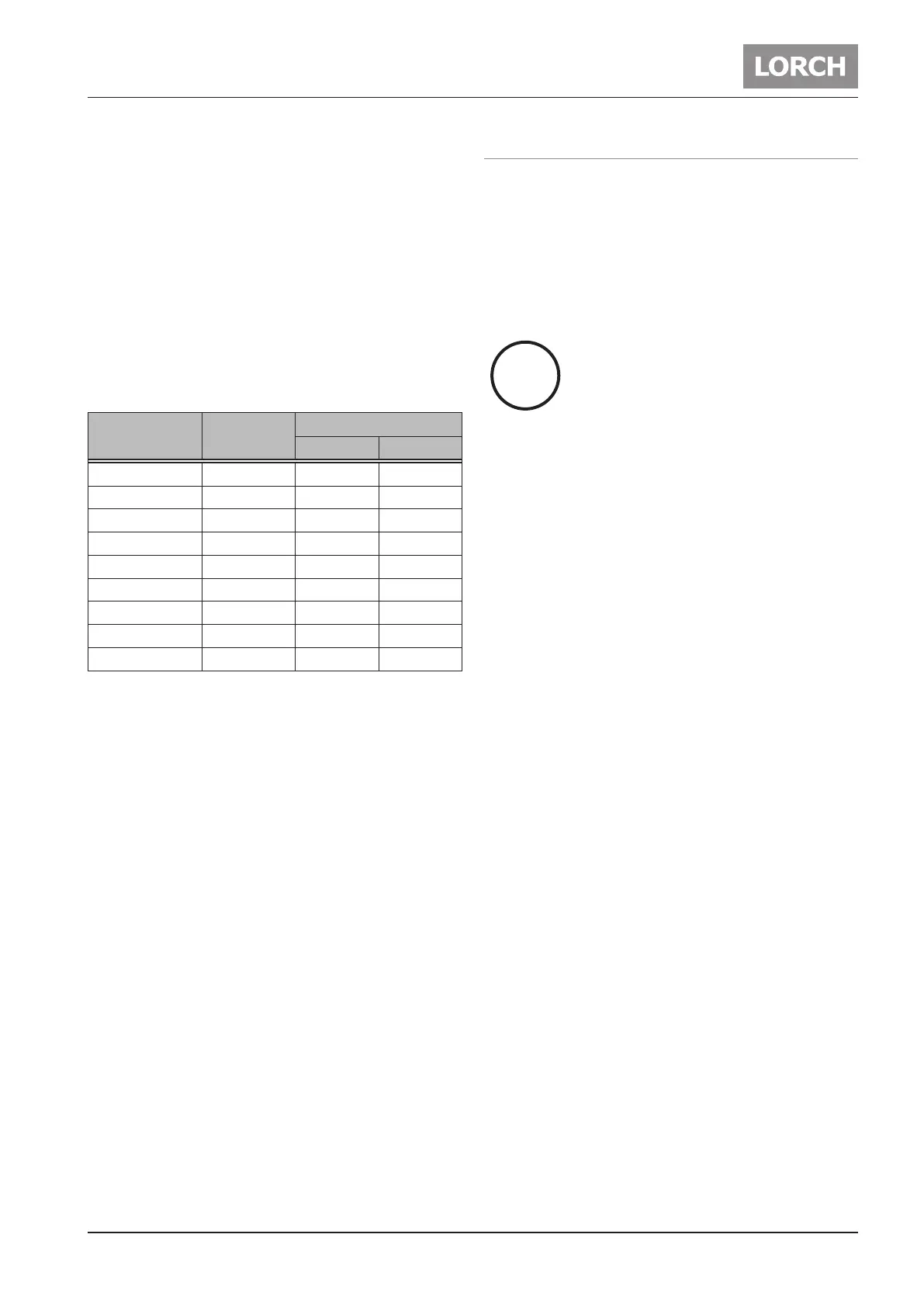